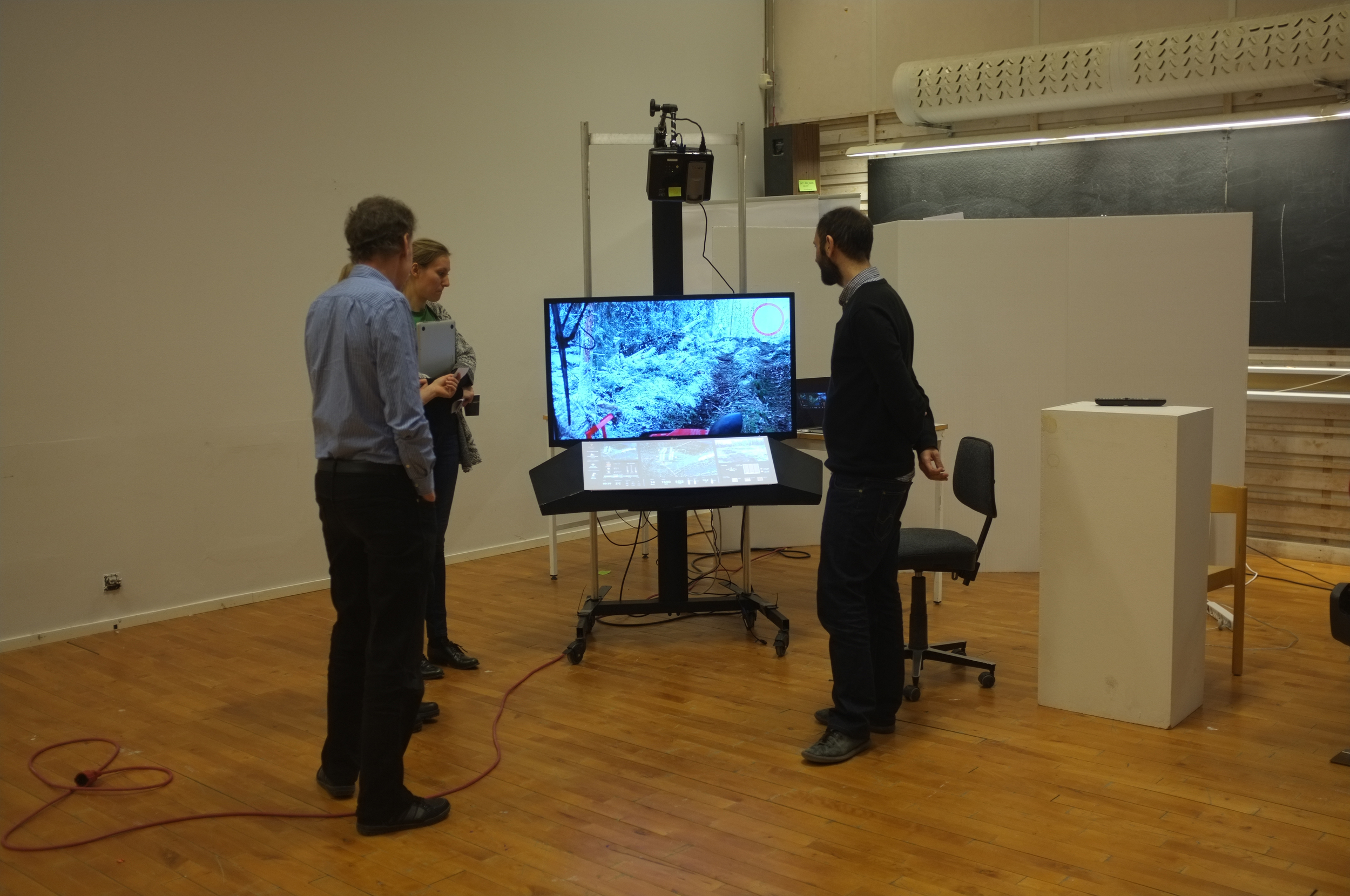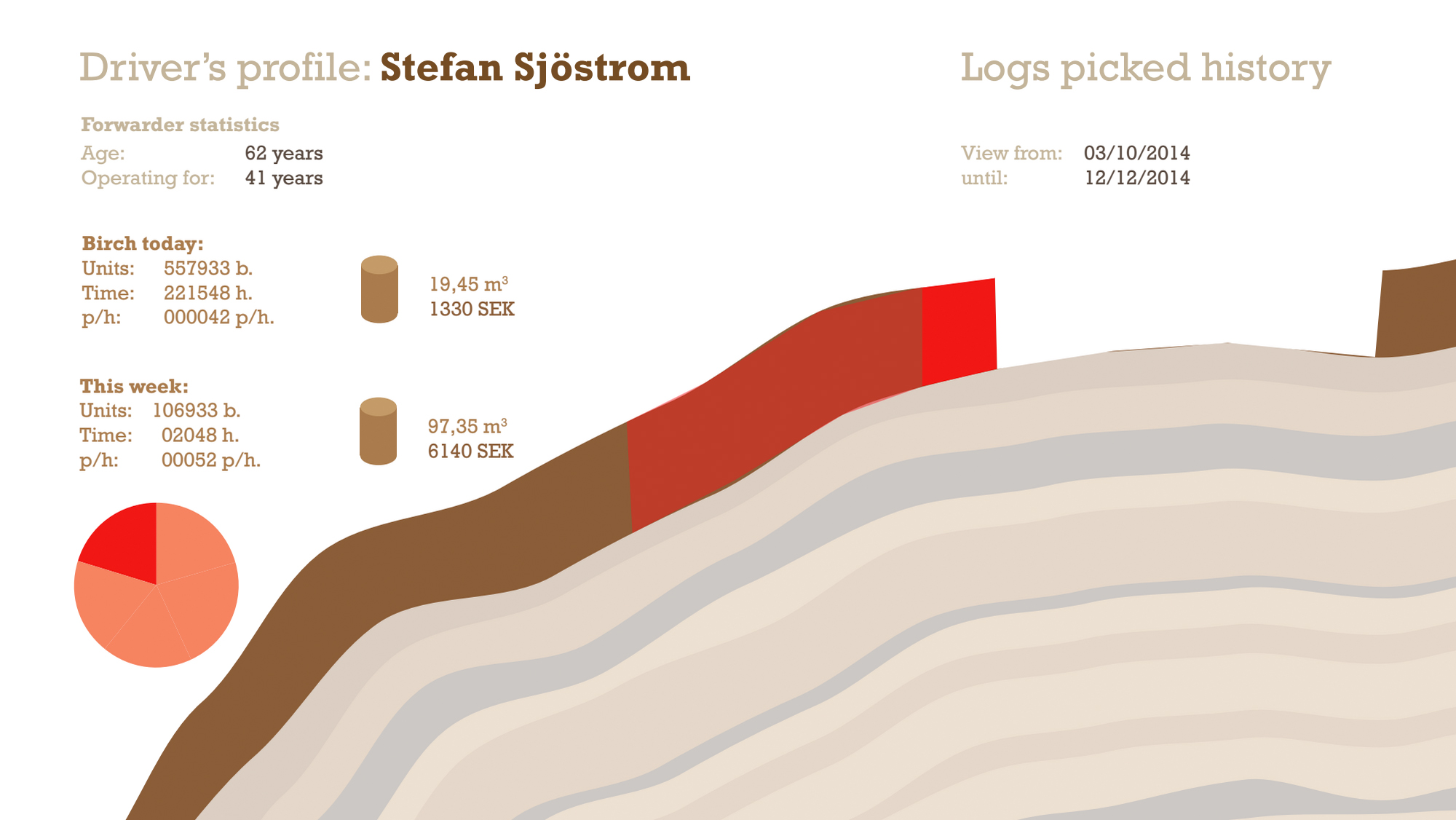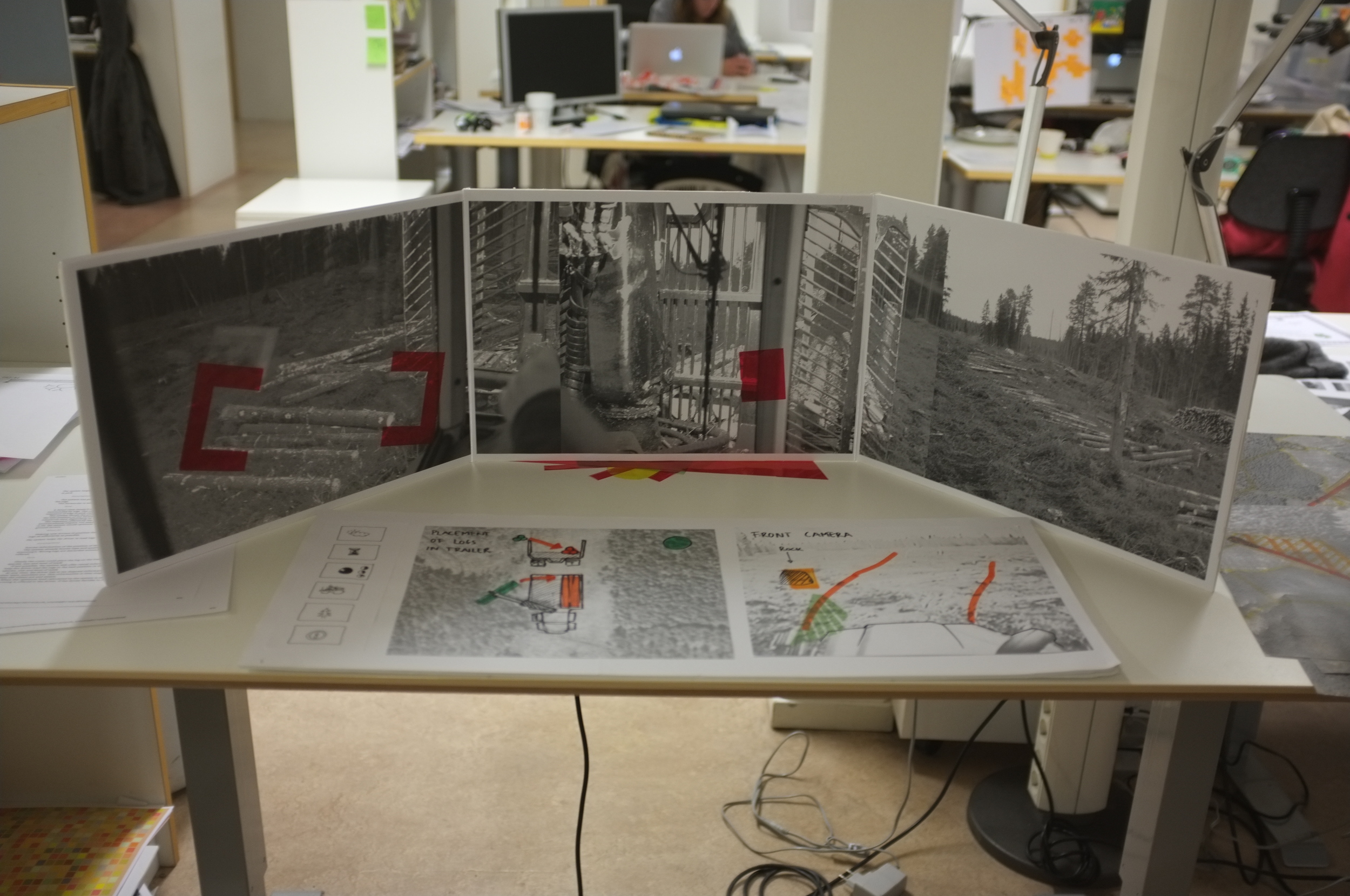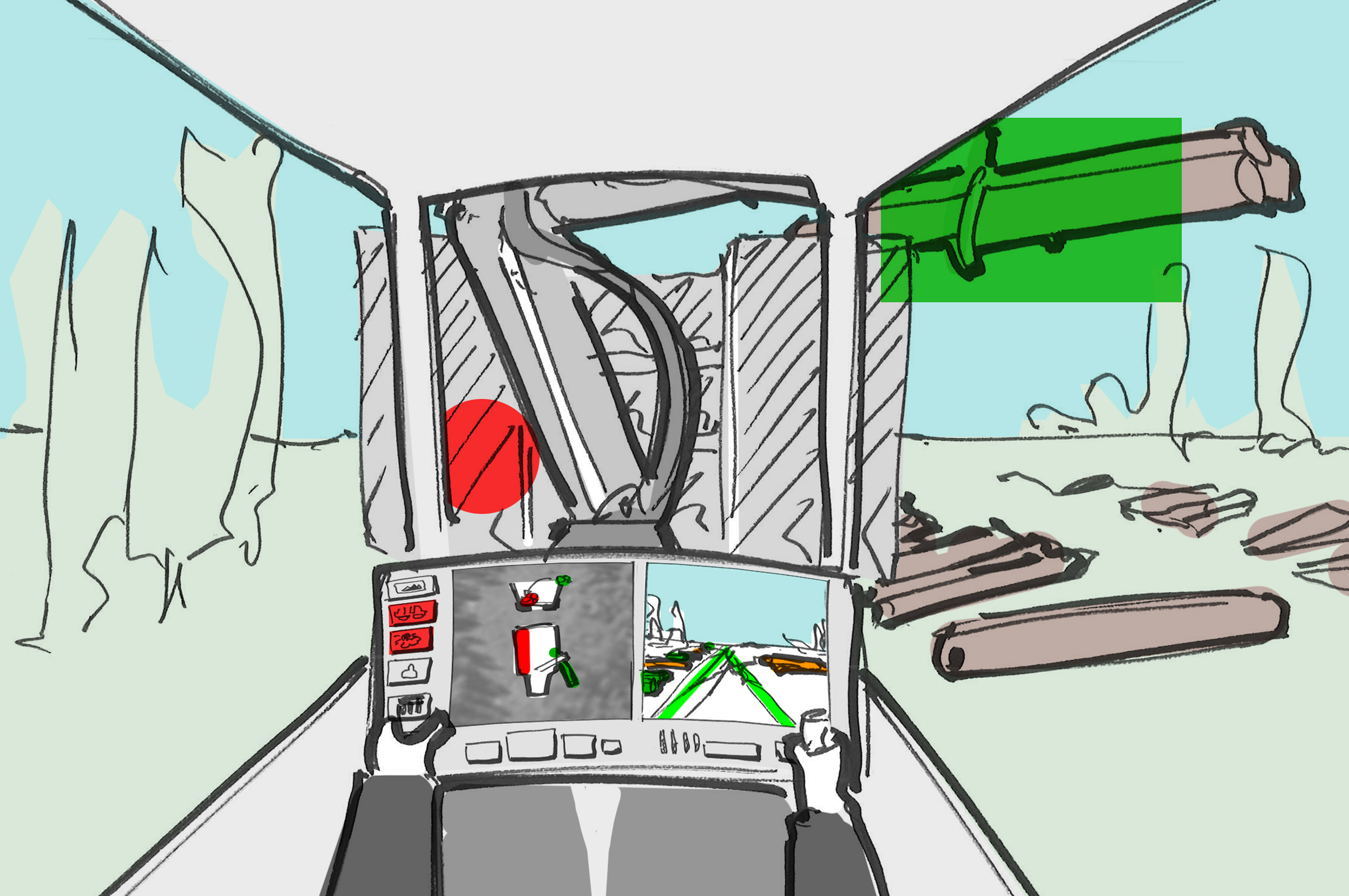Project Brief
The project aim was to design the user interface for operating forestry machines in 2020. The focus in our group was on navigating the forwarder.
This project was done in collaboration with Komatsu, SLU (Swedish University of Agricultural Science) and Skogstekniska Klustret (The Forestry Technology Cluster).
This was a 6 weeks group project of 4
Concept
Treeprint is an assisting system that present relevant information to the driver based on the driver' current working situation. The system is able to adapt to the driver's level of experience and can be customized for the driver's individual needs.
Research
The collecting, sorting and transportation of logs requires complex information handling specific to each task and situation. There are many variables that influence the management of the task. These variables are largely external to the desired plan and forecast of the task, influencing ‘on the spot’ decisions that directly affect productivity.
Insight
During our research we realised the value in the knowledge and the experience of the driver, and recognise the fact that an expert driver is an asset to the efficiency of the process.
Ideation
We based our ideations phase on previously defined factors that influence the navigation of the forwarder. Moving forward, we visually mapped the stages of UI combined with the stages of the driver’s cognitive process. This was done in a way to allow for fluid movement and repositioning of ideas and scenario changes.
User study
We met students at a Forestry Studies School to test our ideas about the information system using our prototype. Our goal was to see if the information we were providing at each moment of the forwarding process was considered useful by the students (and future drivers). The feedback in general was positive. More precisely, the students found the information easy to understand and highlighted the possibilities for better planning and a more organized work flow
Conclusions
We believe that drivers in the future should be able to access more information about their surroundings. Such as; more precise GPS positions for machines and logs, detailed data about quantity, type and quality of the logs and information about the ground; altitude, wet areas and density of the soil etc.
Our assumptions are based on the research that we have carried out during the project and in dialogue with collaboration partners.
Solution
The interface in form av an display inside the cabin shows overview information of the work area. The driver can chose which area he wants to work in, when the driver enters a defined sub area, the main map view will show detailed information such as: the precise location, weight and type of each log in relation to the vehicle. These logs will disappear from the map as they are being collected.
The map together with the augmented reality shown in the window will also be helpful in conditions of poor visibility.For the inexperienced driver the augmented reality may also be applied to the windows of the vehicle to shorten the learning curve.
Prototype
A prototype was used to present our result. We used a projector to project the display inside the cabin. A movie showed the environment outside the machine and the augmented reality indicating the logs.



